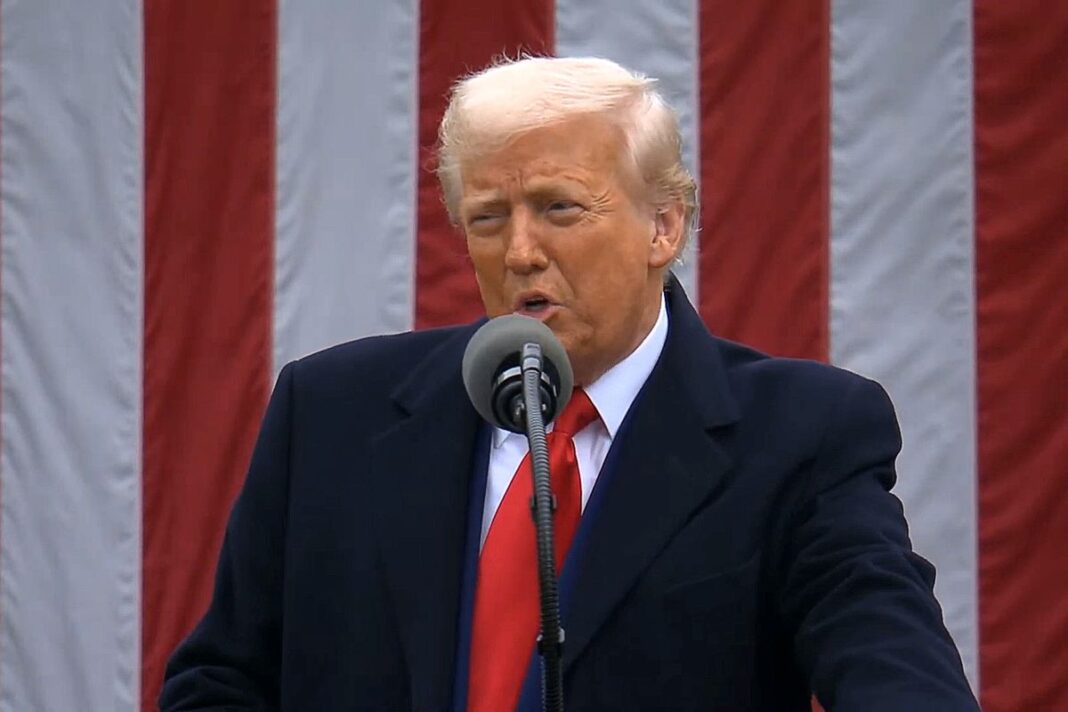‘For decades, our country has been looted, pillaged, raped, and plundered by nations near and far, both friend and foe alike,’ Trump said.
The United States will implement a 10 percent across-the-board tariff on all imports as part of the Trump administration’s reciprocal tariffs on all nations.
President Donald Trump unveiled sweeping reciprocal tariffs at the White House Rose Garden on April 2, calling it the United States’ “declaration of economic independence” and one of the most important days in U.S. history.
The president will sign an executive order implementing reciprocal tariffs on countries worldwide.
“Reciprocal. That means they do it to us, and we do it to them. Very simple. Can’t get any simpler than that,” he said.
“For decades, our country has been looted, pillaged, raped, and plundered by nations near and far, both friend and foe alike.”
The United States will implement a baseline tariff rate of 10 percent, which will go into effect on April 5 at 12:01 a.m.
Higher reciprocal rates will be imposed on countries on the “worst offenders” list. These will take effect on April 9 at 12:01 a.m. The White House estimates that about 60 countries are on this list.
Trump outlined some of the tariff rates on U.S. trading partners. The United States will impose a 34 percent levy on China, a 46 percent tariff on Vietnam, and 20 percent on the European Union.
Tariffs will be implemented through the International Emergency Economic Powers Act (IEEPA), a 1977 law authorizing the president to impose trade restrictions on foreign countries.
Trump invoked this act in February and implemented tariffs on Canada, Mexico, and China, alleging illicit drug and illegal immigration threats.
White House officials say there have been unfair trade practices and a lack of reciprocity by U.S. trade partners. These actions have fueled massive trade deficits, “undermining our national and economic security,” according to officials.
Last year, the United States registered a record $1.2 trillion goods trade deficit.
While the administration seeks to address high tariff rates, officials say that the bigger problem is other countries’ non-tariff barriers. The White House identified various examples of how foreign governments utilize non-monetary trade restrictions.
By Andrew Moran
Read Full Article on TheEpochTimes.com
List of Reciprocal Tariffs Rates Announced By Trump:
China: 34 percent
European Union: 20 percent
South Korea: 25 percent
India: 26 percent
Vietnam: 46 percent
Taiwan: 32 percent
Japan: 24 percent
Thailand: 36 percent
Switzerland: 31 percent
Indonesia: 32 percent
Malaysia: 24 percent
Cambodia: 49 percent
United Kingdom: 10 percent
South Africa: 30 percent
Brazil: 10 percent
Bangladesh: 37 percent
Singapore: 10 percent
Israel: 17 percent
Philippines: 17 percent
Chile: 10 percent
Australia: 10 percent
Pakistan: 29 percent
Turkey: 10 percent
Sri Lanka: 44 percent
Colombia: 10 percent







